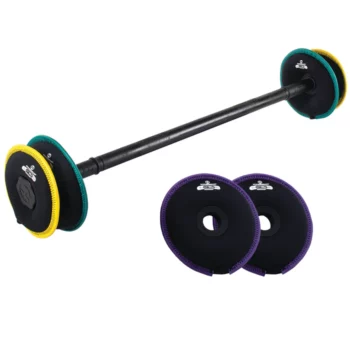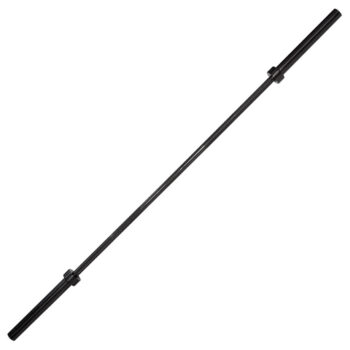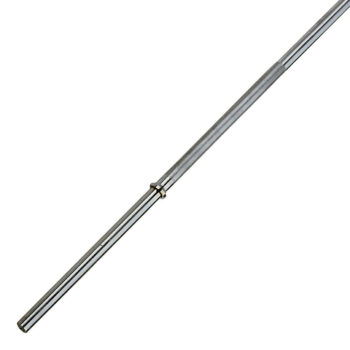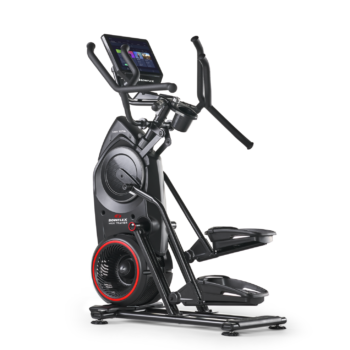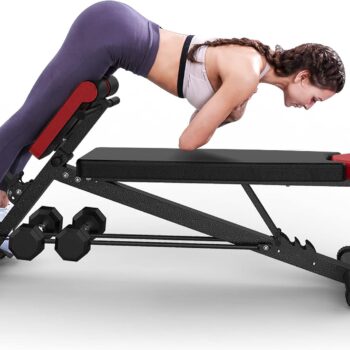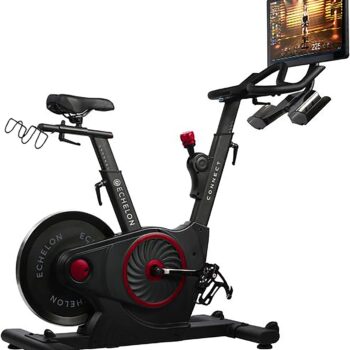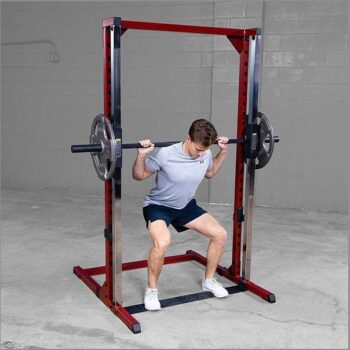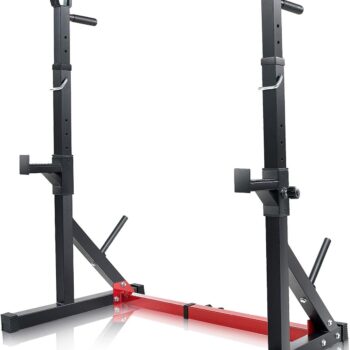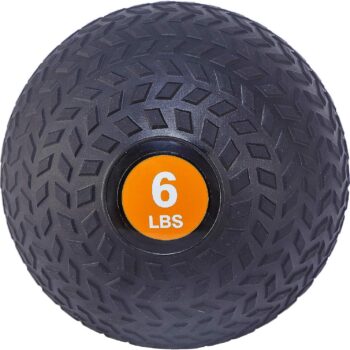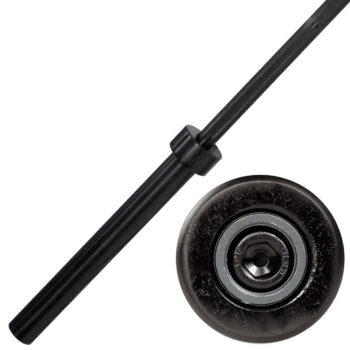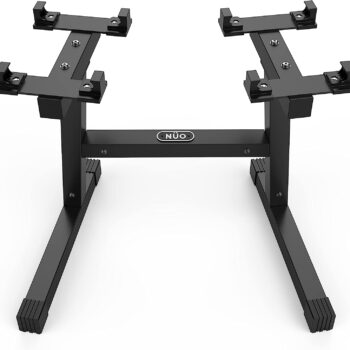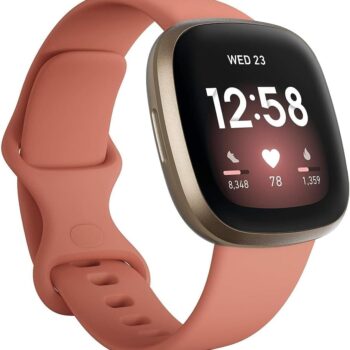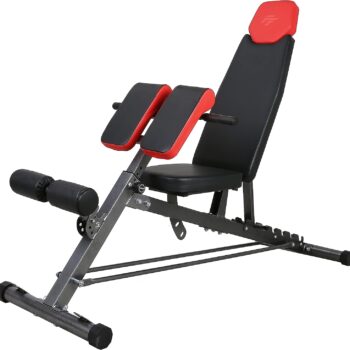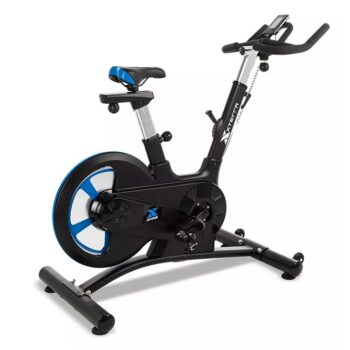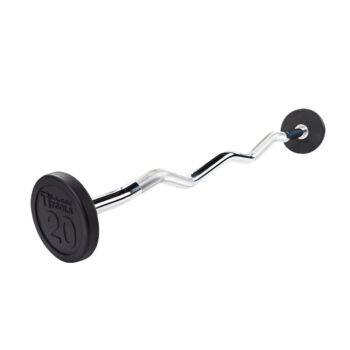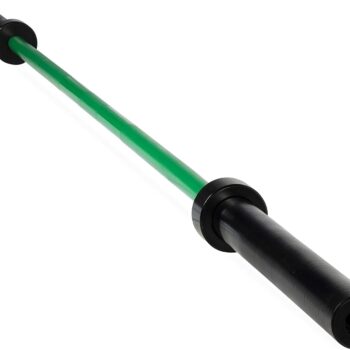Are you looking to leverage the benefits of a straight bar in your fitness routine? Wonder no more. In this comprehensive guide, learn how to utilize a straight bar to its fullest, from unlocking the secrets behind powerful compound and isolation exercises to enhancing your grip strength. You’ll also gain insights into choosing the perfect straight bar that aligns with your workout goals. Whether you’re a beginner or a seasoned athlete, prepare to transform your training with the strategies outlined here.
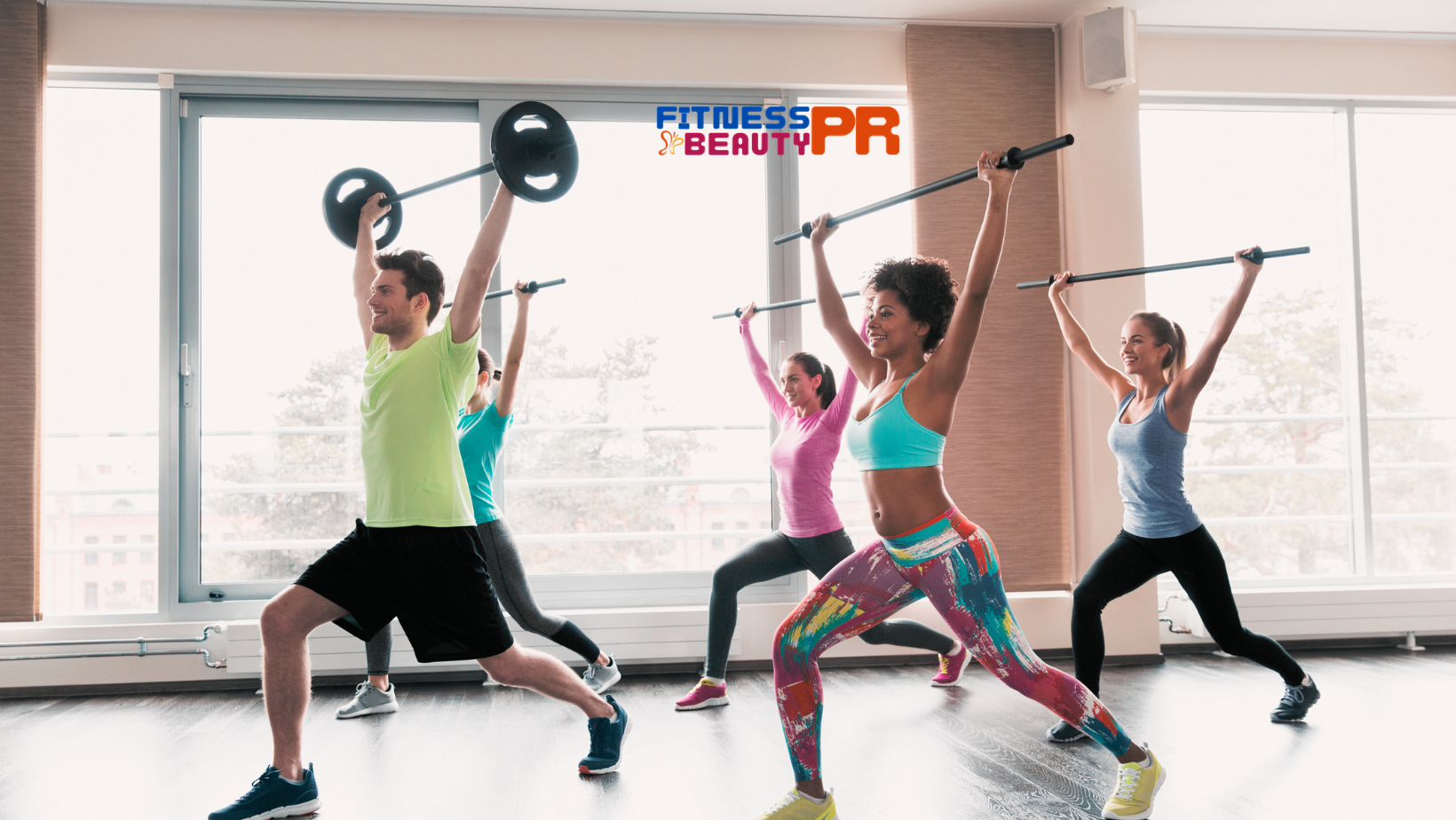
Key Takeaways
-
Straight bar training offers a versatile range of exercises including both compound movements for multiple muscle groups and isolation exercises for targeted muscle development, also enhancing grip strength.
-
Choosing the right straight bar involves considering factors such as length, weight capacity, and material, each of which significantly influences the effectiveness and safety of your workout.
-
Proper maintenance is crucial for the longevity of a straight bar, involving regular cleaning, appropriate storage solutions, and periodic inspections to ensure safety and optimal performance.
The Power of Straight Bar Training
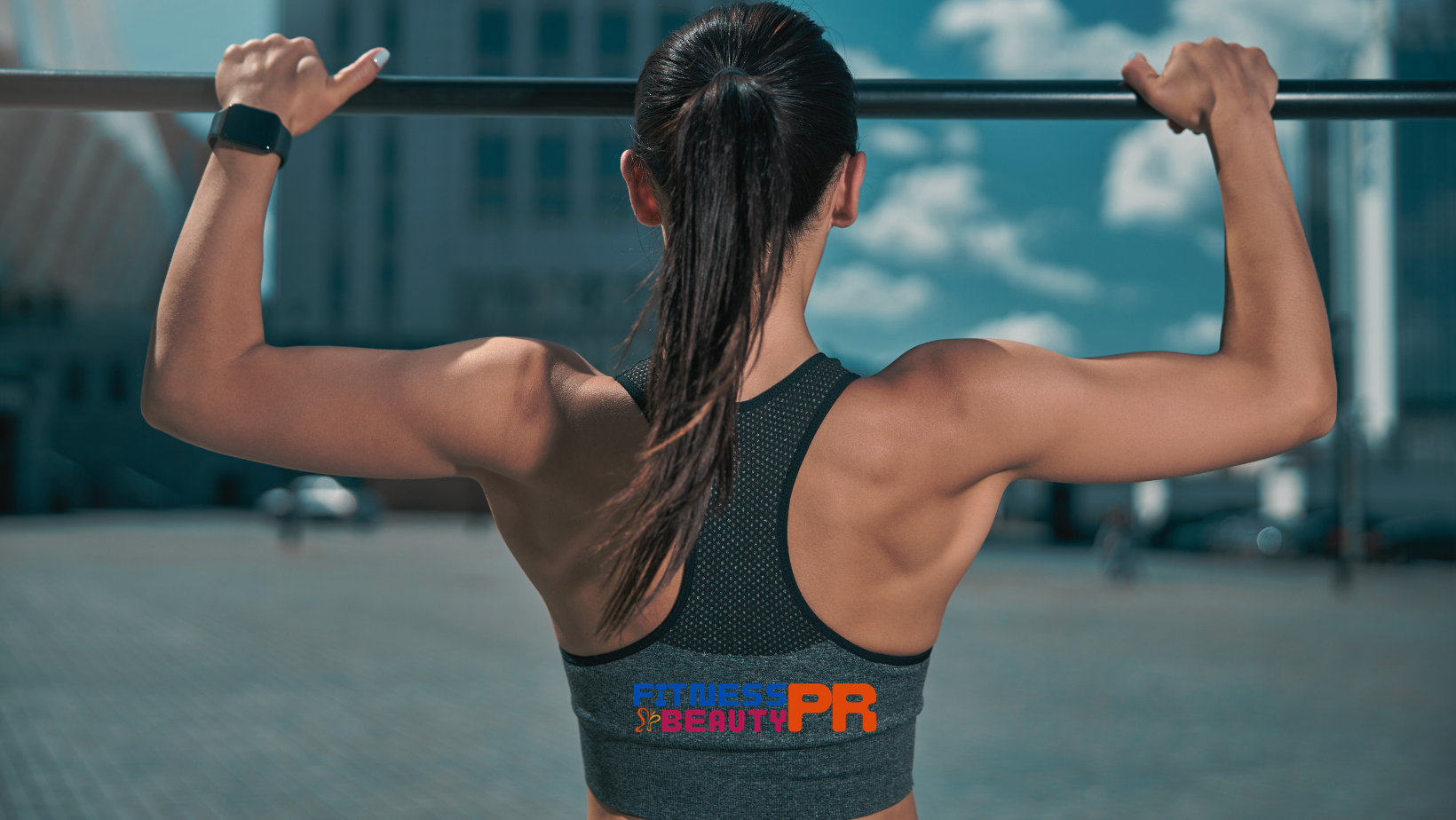
Straight bars are a highly versatile and effective tool for training, providing access to a wide range of exercises that effectively target multiple muscle groups simultaneously. In essence, it’s like having an entire gym packed into one convenient piece of equipment. Pro Style fixed straight bars or popular choices such as the York barbell can support heavier weights during workouts, which helps promote increased muscle mass and strengthens grip.
The use of straight bars allows for compound movements like Barbell Bench Press and Deadlifts to be performed alongside isolation exercises including the Straight Arm Pulldown and Barbell Back Squat, making them indispensable in any fitness routine. Regularly incorporating these types of exercises using straight bars has been proven to significantly enhance overall grip strength over time while still targeting various muscles throughout the body.
Compound Exercises
Utilizing a straight bar for compound movements effectively targets and engages multiple muscle groups, leading to increased muscle and strength development. With exercises such as Deadlifts, Bench Presses, Squats, Pull-Ups, Dips, Power Cleans, Overhead Squats, Lunges, and Push Presses performed using a high-quality straight bar, you can expect an all-inclusive workout that not only burns calories but also improves intramuscular coordination, increase heart rate, promote flexibility, and strengthen stabilizer muscles in the arms and glutes regions.
Isolation Exercises
Isolation exercises using a straight bar focus on specific muscle groups for concentrated training and correction of any imbalances. Unlike compound exercises that engage multiple muscles simultaneously, these targeted workouts are effective in building strength and promoting growth in areas such as the biceps, triceps, legs, chest, and shoulders. By honing in on particular muscles with precision movements like arm curls or tricep extensions, individuals can achieve enhanced results and work towards their desired physique.
Grip Strength Enhancement
Grip strength is often overlooked but plays a crucial role in various exercises and daily tasks. Training with a straight bar effectively targets the muscles of the hands and forearms, especially when utilizing exercises like hanging from the bar or using an underhand grip.
To its benefits for upper body control, enhanced grip strength can lead to improved performance in sports and overall core stability. Even everyday activities such as lifting objects or completing household chores can be made easier by having stronger hand muscles.
Choosing the Right Straight Bar for Your Goals
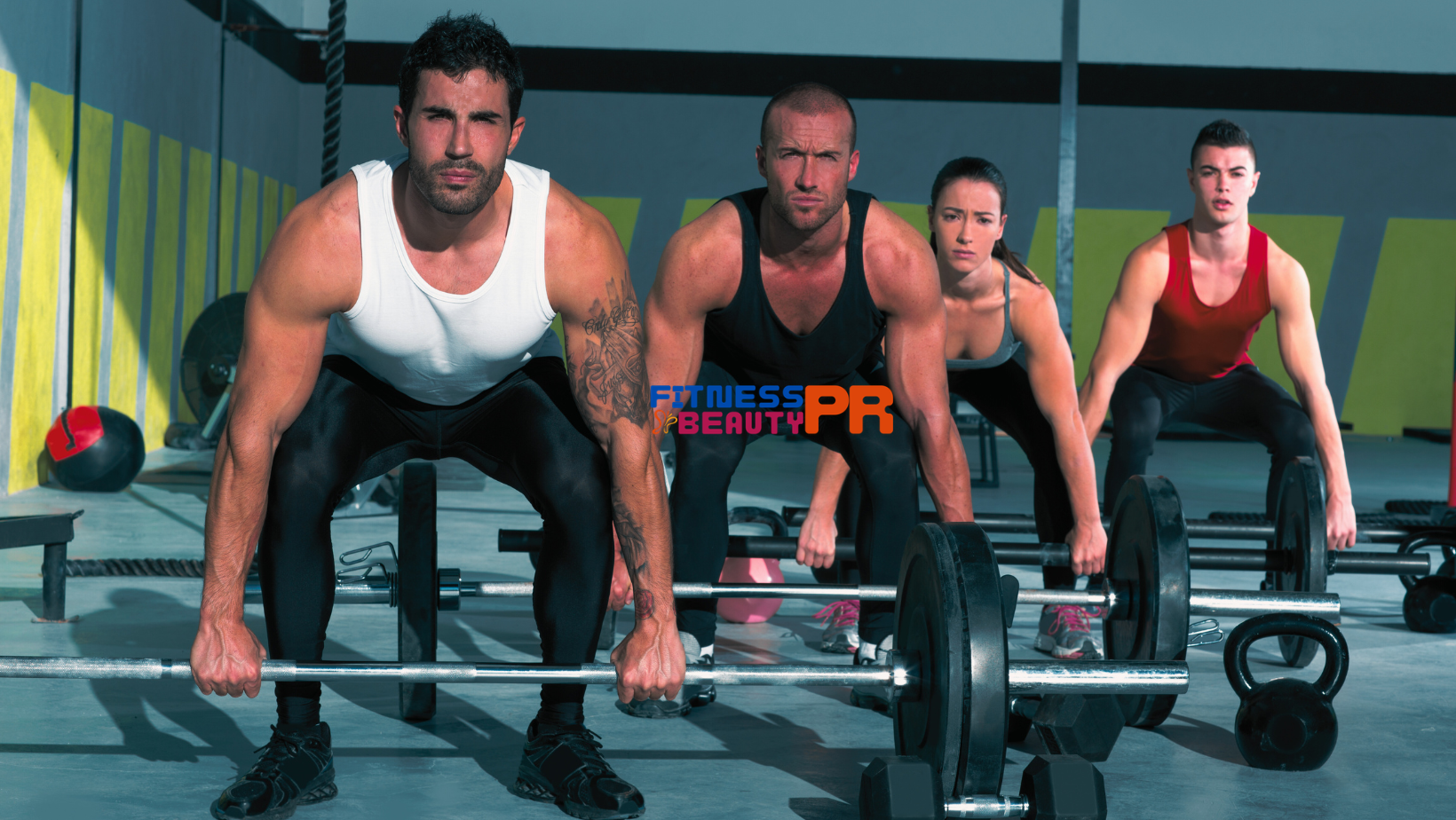
Selecting the perfect straight bar for your workouts is not a straightforward task. The length, weight capacity, and material of the bar are all important considerations that can greatly impact your workout experience. Finding the right bar can improve your exercises, guarantee safety, and cater to individual needs.
To make an informed decision on which straight bar to choose, let’s examine each factor in detail. These factors include its size or length, as well as its weight-bearing capabilities and composition materials.
Length
The length of a straight bar has a significant impact on your workouts and can range from 5ft to 7ft. When deciding on the right length for you, it’s important to consider both your height and the specific exercises you will be performing.
For example, if you are taller in stature, a longer 7-foot barbell may be more suitable. Studies have shown that different lengths of bars can affect performance differently. With longer bars potentially leading to greater gains in muscular strength compared to shorter ones. It is worth noting though that when it comes to building muscle mass (hypertrophy), there does not seem to be much difference between using long or short barbells.
Weight Capacity
Selecting a straight bar requires careful consideration of its weight capacity, or the maximum amount it can safely hold. Standard 1-inch barbells typically have a weight limit ranging from 200-300 pounds and can support up to approximately 500 pounds. Opting for a higher weight capacity enables you to challenge your muscles with heavier weights, leading to more effective strengthening. Exceeding the recommended weight limit of a straight bar poses potential risks such as injury and permanent deformation of the equipment.
Material and Construction
The materials commonly used in the production of straight bars include aluminum, stainless steel, and hot rolled steel. Aside from affecting its strength, these materials also play a crucial role in determining how effective the bar will be during workout routines.
Stainless steel is highly resistant to corrosion, making it an ideal choice for environments like marine settings. On the other hand, aluminum bars are known for their ease of manipulation during the fabrication process as well as their improved durability and resistance against corrosion.
Top Straight Bar Exercises for Upper Body
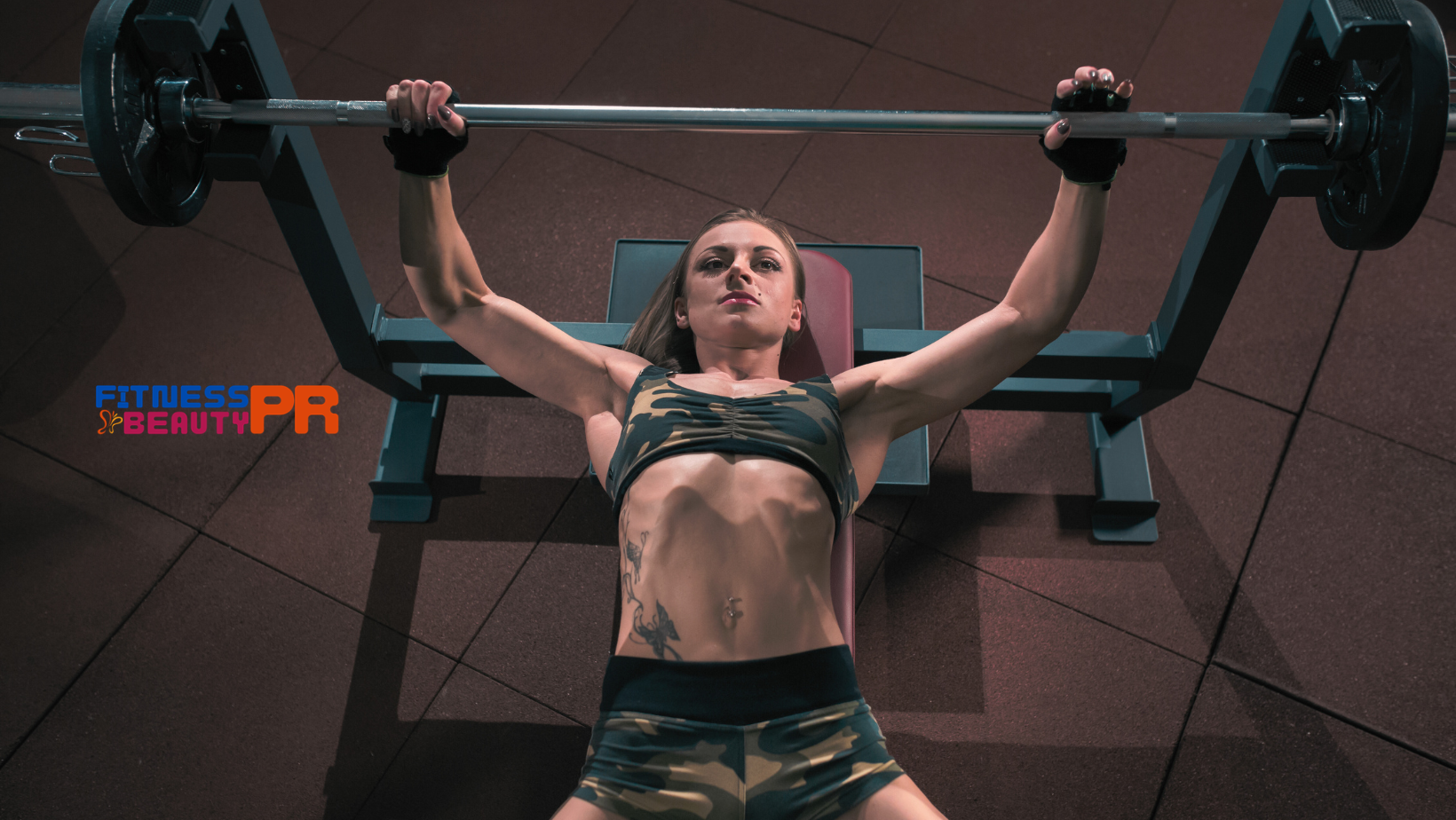
Bar exercises are not only beneficial for your lower body, but they also provide an effective means of training the upper body. Utilizing a straight bar in exercises such as bench presses, bent-over rows and overhead presses can help develop strength and increase muscle mass in the chest, back and shoulders.
These particular exercises specifically target the upper body muscles and offer numerous benefits when incorporated into workout routines. These include strengthening key areas like the chest, back, and shoulders while simultaneously building lean muscle mass throughout the entire upper region of your body.
Bench Press
A popular upper body workout, the bench press primarily targets the pectoral muscles, shoulders and arms. Using a straight bar can improve triceps strength and overall upper body strength while also enhancing muscular endurance and toning the arms. Maintaining proper form is essential for safety and effectiveness. To avoid common mistakes like using too much weight or improper grip width, it’s important to pay attention to your breathing technique, shoulder blade positioning, and leg drive. To keep your core stable during this exercise.
Bent-Over Row
The bent-over row is a highly effective exercise for targeting the upper body, particularly the back muscles and biceps. When done with a straight bar, it offers various advantages including promoting stability in the spine, improving hip hinge movement, engaging multiple muscle groups simultaneously, teaching proper bending technique at the hips, strengthening core muscles, and potentially reducing low back pain and enhancing posture.
To maintain correct form while performing this exercise, you should bend at your hips, tuck your tailbone slightly inward, maintain an upright spinal alignment, pull on the bar towards your belly button by keeping your knees softly bent.
Overhead Press
The overhead press using a straight bar is an effective workout that engages the entire body, specifically targeting muscles in the deltoids, trapezius, triceps, and core. Adding this exercise to your routine can improve overall strength and mobility of both the upper body and core.
To perform this movement correctly:
-
Push the bar up from shoulder level in a vertical motion until your arms are fully extended.
-
Squeeze at the top of each rep.
-
Maintain a grip on the bar with hands no wider than shoulder-width apart.
-
Keep your elbows directly under your wrists for proper form.”
Essential Lower Body Straight Bar Exercises

Straight bars can provide not only upper body benefits, but they also offer a variety of exercises that have the potential to greatly improve lower body strength and muscle mass. Some popular examples include squats, deadlifts, and lunges which are all highly effective in building strong muscles in the lower region.
It is important to properly learn these essential movements for optimal results. The proper form while performing each exercise should be taken into consideration carefully when executing them on straight bars effectively enhance your workout routine for overall muscular development.
Squats
Squats using a straight bar are an incredibly effective exercise for targeting the lower body. They engage key muscles such as the quadriceps, hamstrings, glutes and core, making them essential in any lower body training routine. It is crucial to maintain proper form while performing squats to avoid common mistakes like not going low enough with your depth or allowing your knees to cave inwards. Make sure you keep your heels firmly planted on the ground and focus on driving through your hips instead of relying solely on knee movement during each repetition.
Deadlifts
Including deadlifts with a straight bar in your workout routine has numerous benefits for the lower body. This exercise targets important muscles such as the glutes, hamstrings, core, back, and trapezius. It activates hip extensors, which can lead to reduced lower back pain and improved jumping performance. Deadlifts also help build bone mineral density, and strengthen grip and overall strength while increasing metabolism for fat-burning effects. They enhance posture stability and contribute to muscle development in various areas like the glutes.
Lunges
Utilizing lunges with a straight bar during your workout is highly beneficial for the lower body. This particular exercise primarily works out the gluteal muscles and quadriceps, resulting in improved balance, enhanced flexibility of hip flexors, better activation of glutes, and increased muscular symmetry. The incorporation of this exercise into one’s fitness routine offers numerous advantages to the body.
Incorporating Straight Bar Exercises into Your Workout Routine
After covering a diverse array of straight bar exercises, it is now important to incorporate them into your workout regimen. You may be wondering how often these exercises should be performed and what equipment can be used in conjunction for added variety.
Let’s get into these aspects as they are crucial considerations to complement our discussion on the perfect addition, the straight bar.
Frequency and Duration
How often and how long you do straight bar workouts will ultimately vary depending on your specific fitness goals. A general recommendation is to include exercises targeting each muscle group with the straight bar 2-3 times per week. This allows for adequate rest and recovery time for each muscle group.
The duration of a straight bar workout can range from less than half an hour to as little as fifteen minutes, based on factors such as intensity level and variety of exercises incorporated into the routine.
Combining with Other Equipment
Utilizing additional equipment during your straight bar workouts can enhance variety and engage various muscle groups. Suspension trainers, power racks, and cable crossover machines are effective tools to combine with the traditional exercises of using a straight bar for improved results.
Incorporating resistance bands by attaching them to the EZ curl or independently utilizing them can amplify movements such as presses and deadlifts while still focusing on key areas like muscles used in an exercise’s specific movement pattern.
Progression and Variation
To avoid reaching a plateau and maintain motivation, it is crucial to incorporate both progression and variation in your straight bar routines. Progression refers to the gradual increase of difficulty or intensity in exercises performed using the bar, which can include adding more weight, doing more repetitions, or moving on to advanced moves like muscle-ups.
On the other hand, variation involves altering either the type of exercises you do or switching up equipment during your workouts. This helps keep your workout routine fresh and interesting over time.
Proper Care and Maintenance of Your Straight Bar
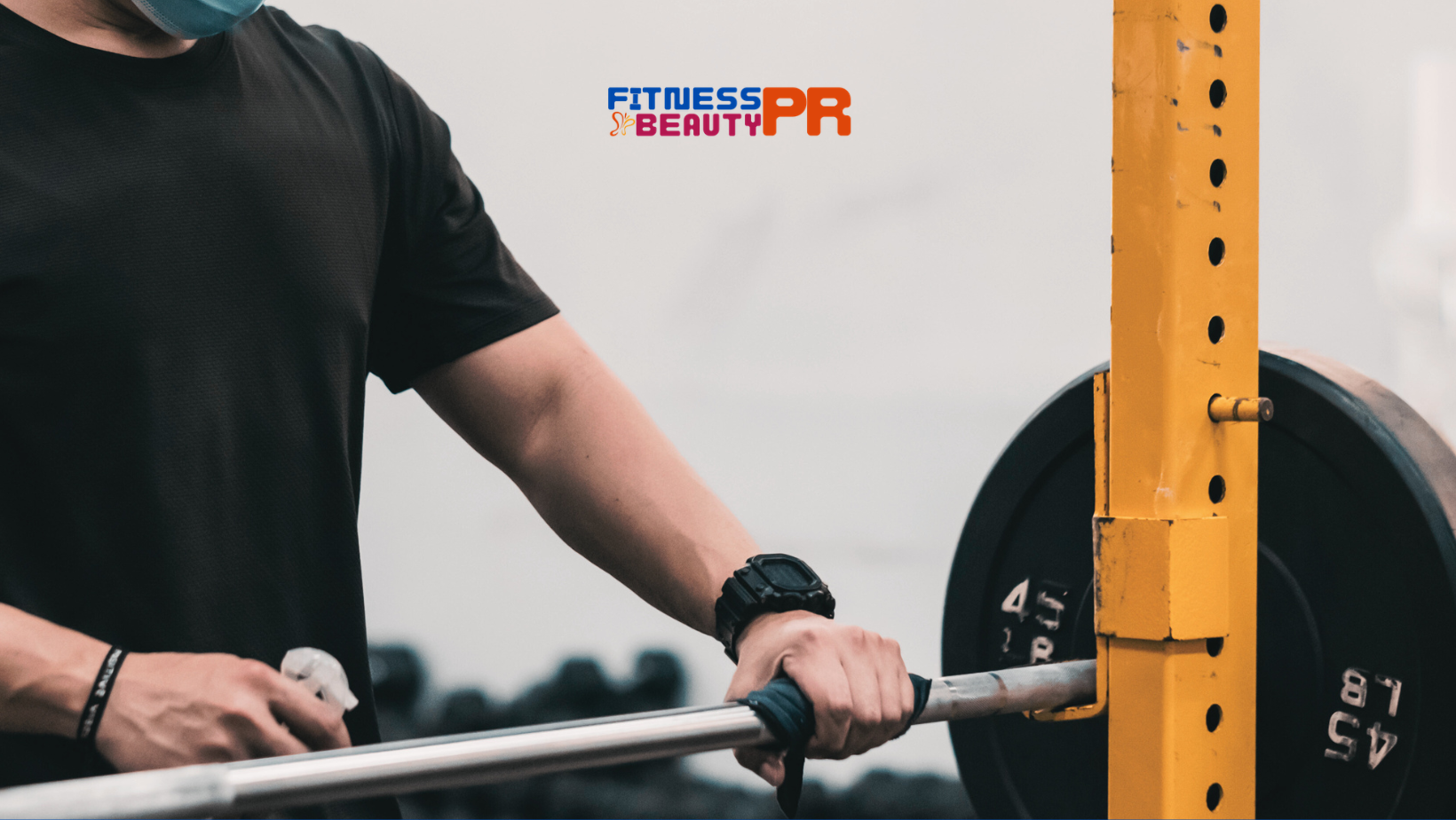
In order to guarantee the durability and functionality of your ets fixed straight bar, similar to any other fitness equipment, it is essential to provide proper care and maintenance. This involves regular cleaning, appropriate storage methods, as well as routine inspection and replacement.
Taking a closer examination at these elements in detail will help ensure that your bar remains in top condition for its intended purpose. It is crucial not only for the longevity of the product, but also for safe usage during workouts. It is important not to overlook.
Cleaning
Maintaining the cleanliness of your straight bar is essential for its appearance and lifespan. To keep it in top condition, regular cleaning should be done daily or after every use to remove chalk from the knurling. It’s important to use safe products such as safety glasses, three-in-one lubricant, snap ring pliers, gloves and a rag when cleaning. Nylon brushes along with standard bar and restaurant cleaners are also recommended.
The complete process for effectively cleaning a straight bar includes:
- Removing the sleeve from the shaft.
- Brushing off the initial residue using a brass brush.
- Soak in white vinegar overnight to loosen any buildup.
- Eliminating rust by brushing again.
- Rinsing thoroughly with water afterward.
- Drying with microfiber cloth.
- Apply an appropriate cleaner/solution onto all parts of the bar before wiping clean. As you can see, it is a simple but vital procedure that will help maintain your straight bars’ quality over time.
Storage
Storing your straight bar properly is crucial in preventing damage and promoting its longevity. It is recommended to store it horizontally on a squat rack or wall-mounted barbell rack, as well as always remove weight plates after use to avoid any potential deformations or weakening of the bar.
Various racks such as vertical storage racks, clothing racks for straight bars, curl barbell racks, and weight bar storage solutions are specifically designed to safely hold these bars in an organized manner. Adding a versatile storage rack can also greatly enhance organization within your gym setup.
Inspection and Replacement
Consistently checking your straight bar is crucial to identify any indications of deterioration and harm in its early stages. In line with OSHA and ASME regulations, it is recommended that a thorough examination of the straight bar be conducted every twelve months.
If you notice scratches or dents or if the bar restricts your range of motion during workouts, it may be time to consider replacing it.
Straight Bar Safety Tips
When engaging in exercises with a straight bar, it is crucial to prioritize safety. It’s essential to understand key measures like practicing proper form, having assistance from a spotter, and recognizing your own capabilities.
Proper Form
Correct form is crucial when it comes to straight bar exercises in order to reduce the chances of injury and maximize the benefits of your workout. It’s important to maintain proper body positioning and technique whether you’re doing a bench press, bent-over row, or overhead press. Always ensure that your movements are aligned with correct form for an effective workout session.
Spotter Assistance
Having a spotter is extremely beneficial when doing exercises with a straight bar. They are able to assist in maintaining correct form, offer motivation and step in if needed for your protection.
Be it performing a bench press or squatting heavy weights, having the assistance of someone watching over can provide you with the necessary support to safely complete these exercises. Their presence helps guarantee proper execution and safety throughout your workout routine.
Knowing Your Limits
Being aware of your limitations is a critical aspect of straight bar training. It involves the skill to gauge when it’s appropriate to strive for an extra repetition and when it’s necessary to stop, which plays a vital role in maintaining steady growth and preserving overall well-being within your workout regimen. Without knowing how much weight you can handle, there is a risk of straining yourself excessively or getting injured.
In summary, incorporating straight bar exercises into your workout routine is a versatile and effective way to improve overall fitness. With options for targeting the upper body, lower body or both, these exercises provide a well-rounded approach to building muscle and increasing strength. By selecting an appropriate bar and maintaining proper form while staying aware of personal limitations, individuals can maximize their workouts with impressive results. Don’t hesitate any longer, begin utilizing the benefits of straight bar training today!
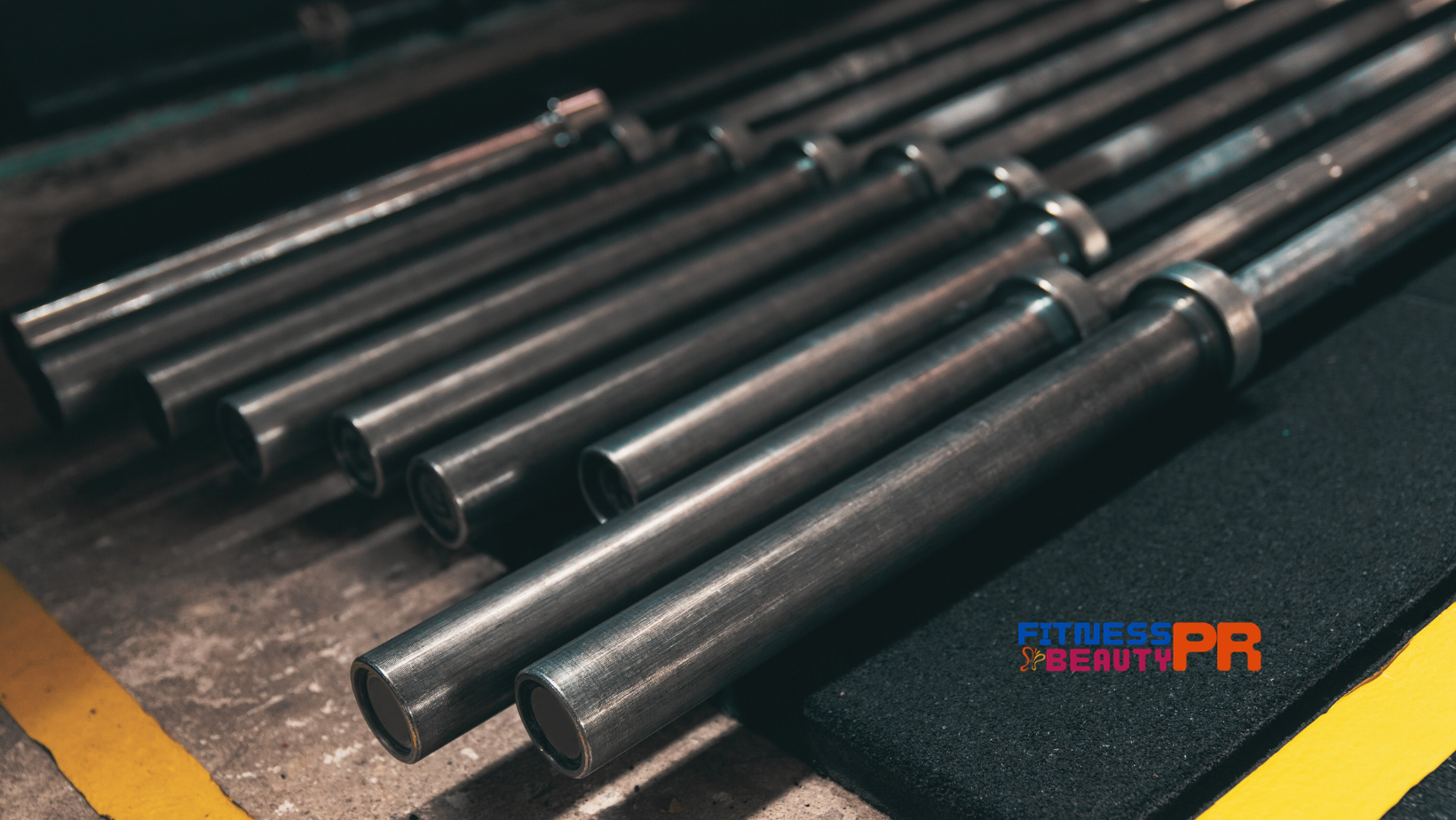
Frequently Asked Questions
Which is better EZ bar or straight bar?
When it comes to working out, the type of bar you use can make a difference in which muscle groups are targeted. The EZ curl bar is ideal for isolating smaller muscles like the triceps and biceps, while the straight bar is more suited for larger muscles such as those in your chest and legs.
So when choosing between an ez curl or straight bar, consider which areas of your body you want to focus on. If building up leg strength is your goal, opt for the standard straight bar.
How much weight is a straight bar?
At the gym, you can commonly find a standard straight barbell weighing 45 pounds and measuring around 7 feet in length. This type of barbell is typically utilized for various lifts and exercises.
What is the difference between Olympic bar and straight bar?
The key distinction between an Olympic bar and a straight bar is in their weight, length, width, and construction. An Olympic bar uses superior steel material, which results in longer and wider dimensions with larger sleeves ends to accommodate heavier weights.
What muscles do straight bar pushdowns work?
Pushdowns with a straight bar focus primarily on the triceps, specifically targeting both the long and medial head muscles. The forearms are also engaged during this exercise, while the biceps play a secondary role in supporting movement. It is important to grip the designated position for optimal results when performing pushdowns with a straight bar.
Home Gym Essentials
-
BowFlex Max Total 16
$2,499.00Original price was: $2,499.00.$2,149.00Current price is: $2,149.00. -
Finer Form Adjustable Dumbbell Set (5-32.5 LBs)
$419.99Original price was: $419.99.$349.99Current price is: $349.99. -
Finer Form Home Gym Weight Bench
$299.99Original price was: $299.99.$179.99Current price is: $179.99. -
Echelon Smart Connect Fitness Bike
$1,499.99Original price was: $1,499.99.$1,198.63Current price is: $1,198.63. -
Fitness Factory Best Fitness Smith Machine BFSM250
$550.00Original price was: $550.00.$435.00Current price is: $435.00. -
Samsung Galaxy Tab S7+
$849.99Original price was: $849.99.$499.99Current price is: $499.99. -
Garmin Venu 2S GPS Smartwatch
$399.99Original price was: $399.99.$299.99Current price is: $299.99. -
Finer Form Adjustable Workout Bench
$299.99Original price was: $299.99.$249.99Current price is: $249.99.


